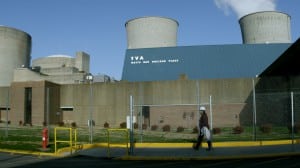Good News (and Mostly Bad) for Nuclear Power
There’s good news and bad news for nuclear power in recent weeks. On balance, it looks like the bad news is more telling.
First the good. The Tennessee Valley Authority says it expects to bring its Watts Bar 2 unit in service sometime this year. That will add 1,150 MW to TVA’s generating capacity.
Then the bad. Watts Bar 2 was started 36 years ago in 1979. TVA halted construction on the project in 1988 at about 80% completion, during the time the U.S. Nuclear Regulatory Commission forced the giant public power agency to close all of its operating nuclear units. TVA began construction on Watts Bar 1 in 1973 and the plant didn’t come into service until 1996, after also being stalled by TVA’s long-lasting nuclear shutdown.
In 2006, when TVA was contemplating restarting construction on Watts Bar 2, Bechtel provided TVA with an estimate of $2.5 billion for the restart project, and a time frame of five years. The project began in 2007. Eight years and $4.3 billion later, the unit is nearly ready to start. The mantra of nuclear construction in the 1970s and 1980s – off schedule and over budget – appears to be alive today.
And that leads to more bad news, this time in Finland. The Finnish utility TVO has said it won’t pursue building Olkiluoto 4, giving the economic catastrophe of its Olkiluoto 3 project. The decision could well mean the end for Areva’s “Evolutionary Power Reactor,” a Generation III design that TVO ordered in 2003, the first new nuclear reactor order in Western Europe in 15 years. Since then, France ordered an EPR for its Flamanville site in Normandy in 2006 and China ordered two units in 2007.
None have gone well, starting with Olkiluoto 3 in Finland. That project, where construction began in 2005, is now scheduled for operation in 2018, some nine years behind the original schedule. The cost has risen from $3.6 billion to $9.5 billion, and the project is also tied up in a tangle of litigation.
Flamanville’s costs have risen from $3.7 billion to $10 billion, and the schedule has slipped to 2017 from 2012, with further cost increases and schedule slippage likely. The British newspaper Daily Mail said that “the history of the Normandy project is one beset by financial mismanagement with rocketing costs, the deaths of workers, an appalling inability to meet construction deadlines, industrial chaos, and huge environmental concerns.”
Great Britain has announced that it has picked France’s state-owned electric company, Electricite de France, and state-owned Areva to build a new EPB pressurized water reactor station in Somerset County, with construction to begin in 2017. It has become a wildly controversial decision in the U.K., with an astonishing estimated price of $25 billion.
Little information is available about the China project, except that it is probably running more than a year behind schedule.
Largely as a result of its EPR travails, Areva is on the ropes. The firm lost a reported $5.4 billion in 2014. This week, EdF said it would bail out Areva by buying its reactor division, a decision that requires the approval of the French government, which owns 85% of both companies.